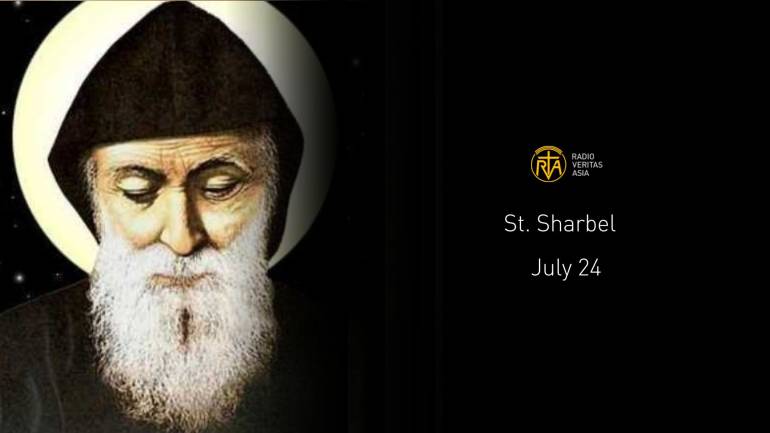Can a Dead Body Ooze Blood? The Story of St. Sharbel’s Incorruptible Body

Holiness is about trust. About surrender. About living for God even when no one is watching.
There are stories in the Catholic Church about saints whose bodies did not decay the way we would expect. For many, these moments become powerful signs that inspire awe, prayer, and a deeper awareness of God’s presence. One example is St. Bernadette of Lourdes, the young French girl who saw the Virgin Mary in 1858. Decades after her death, her body was exhumed and found to be in an extraordinary state of preservation. Another well-known case is St. Padre Pio, the beloved Italian priest who bore the wounds of Christ. Even 40 years after his passing, his body showed minimal signs of decay.
For many people, stories like these are reminders of God’s grace a way of showing how deeply He values lives lived in holiness.
But here’s something you might not know: one of these incorrupt saints came from Asia.
An Incorrupt Saint from Lebanon
Nestled between the Mediterranean and the Arabian Peninsula, Lebanon is home to a quiet but powerful figure St. Sharbel Makhlouf. He lived a hidden, humble life as a monk in the mountains, yet his story eventually reached far beyond his homeland.
Sharbel was born in 1828 in the quiet village of Bekaa Kafra. Even as a child, he was drawn to prayer and to living simply in God’s presence. At 23, he joined the Lebanese Maronite Order and later chose to live as a hermit at the Hermitage of Saints Peter and Paul in Annaya, dedicating his life to silence, prayer, fasting, and the celebration of Mass.
He lived far from public view. He did not speak much. He did not publish anything. His life was hidden in God deeply prayerful and centered entirely on the Eucharist.
On Christmas Eve in 1898, while celebrating Mass, Sharbel suffered a stroke. He died later that night and was buried quietly in the monastery cemetery. At that time, few could have imagined the incredible events that would follow decades later.
The Mysterious Light
More than 50 years after his death, in 1950, local villagers began noticing something unusual: a mysterious light glowing over Sharbel’s tomb at night. It appeared again and again. Eventually, the monks decided to investigate.
When they opened the tomb, they were astonished. Sharbel’s body was completely incorrupt untouched by decay. Even more remarkably, his body was still soft and flexible and appeared to sweat and bleed, as though still alive.
Doctors, scientists, and Church leaders examined the body. No natural explanation could be found. For over 65 years, the body continued to ooze a blood-like fluid, even while sealed in a coffin.
Word spread. Pilgrims came in large numbers. Many reported spiritual and even physical healings after praying through Sharbel’s intercession.
Eventually, the bleeding ceased, and the body began to decompose naturally. Today, his remains rest in a special shrine at the Monastery of St. Maron in Annaya, where thousands still visit each year seeking peace, healing, and guidance.
Sharbel was beatified in 1965 and canonized in 1977 by Pope Paul VI. His sainthood is based not only on the remarkable condition of his body but also on the countless healings and deep spiritual impact his life continues to have around the world.
A Saint from the Heart of Asia
Though Sharbel lived a quiet, hidden life in a mountain hermitage, his legacy has spread far and wide. Devotion to him is strong across the Middle East and in places like the Philippines, Australia, the United States, and Latin America.
Even people who are not Christian have visited his tomb and experienced moments of peace, healing, or something they simply cannot explain. The Monastery of Annaya continues to receive testimonies like these, each one carefullydocumented.
A Saint for the Modern World
In a time when the world often celebrates noise, fame, and visibility, St. Sharbel’s life is a powerful reminder that holiness often grows in silence. He did not seek attention or acclaim. He simply gave his entire life to God quietly, humbly, and with unwavering faith.
Doctors may not fully understand the incorruptibility of his body or the reports of it mysteriously bleeding. But for many believers, these are signs that God still moves in quiet, miraculous ways—and that deep sanctity is possible for anyone who loves Him above all else.
St. Sharbel’s story isn’t just about miracles. It’s about trust. About surrender. About living for God, even when no one is watching. And that is why, more than 120 years after his death, St. Sharbel continues to inspire a saint not only of the past, but for our time.
Radio Veritas Asia (RVA), a media platform of the Catholic Church, aims to share Christ. RVA started in 1969 as a continental Catholic radio station to serve Asian countries in their respective local language, thus earning the tag “the Voice of Asian Christianity.” Responding to the emerging context, RVA embraced media platforms to connect with the global Asian audience via its 21 language websites and various social media platforms.











